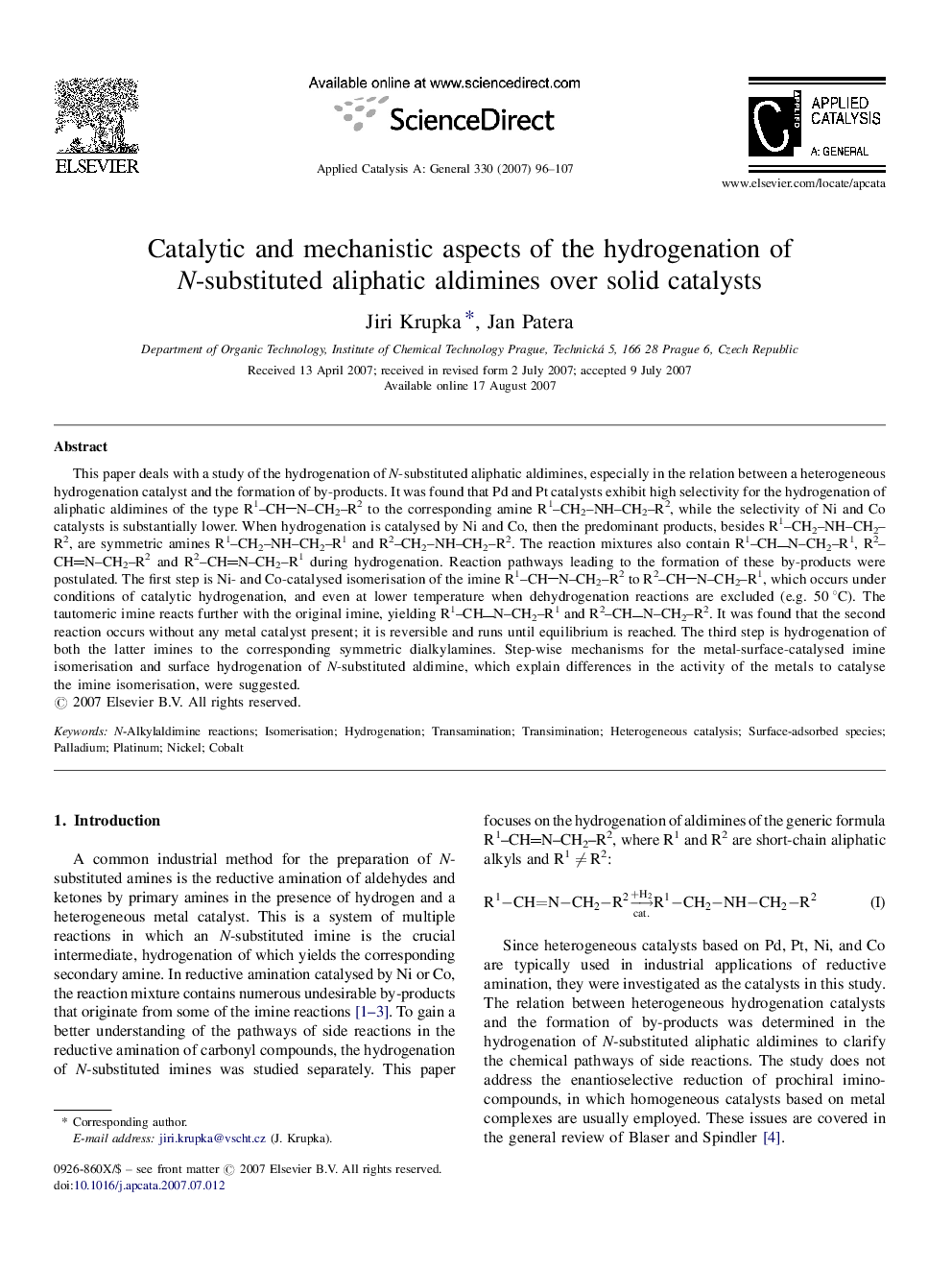| کد مقاله | کد نشریه | سال انتشار | مقاله انگلیسی | نسخه تمام متن |
|---|---|---|---|---|
| 43452 | 45970 | 2007 | 12 صفحه PDF | دانلود رایگان |

This paper deals with a study of the hydrogenation of N-substituted aliphatic aldimines, especially in the relation between a heterogeneous hydrogenation catalyst and the formation of by-products. It was found that Pd and Pt catalysts exhibit high selectivity for the hydrogenation of aliphatic aldimines of the type R1–CHN–CH2–R2 to the corresponding amine R1–CH2–NH–CH2–R2, while the selectivity of Ni and Co catalysts is substantially lower. When hydrogenation is catalysed by Ni and Co, then the predominant products, besides R1–CH2–NH–CH2–R2, are symmetric amines R1–CH2–NH–CH2–R1 and R2–CH2–NH–CH2–R2. The reaction mixtures also contain R1–CHN–CH2–R1, R2–CHN–CH2–R2 and R2–CHN–CH2–R1 during hydrogenation. Reaction pathways leading to the formation of these by-products were postulated. The first step is Ni- and Co-catalysed isomerisation of the imine R1–CHN–CH2–R2 to R2–CHN–CH2–R1, which occurs under conditions of catalytic hydrogenation, and even at lower temperature when dehydrogenation reactions are excluded (e.g. 50 °C). The tautomeric imine reacts further with the original imine, yielding R1–CHN–CH2–R1 and R2–CHN–CH2–R2. It was found that the second reaction occurs without any metal catalyst present; it is reversible and runs until equilibrium is reached. The third step is hydrogenation of both the latter imines to the corresponding symmetric dialkylamines. Step-wise mechanisms for the metal-surface-catalysed imine isomerisation and surface hydrogenation of N-substituted aldimine, which explain differences in the activity of the metals to catalyse the imine isomerisation, were suggested.
This paper deals with a study of the hydrogenation of N-substituted aliphatic aldimines, especially in the relation between a heterogeneous hydrogenation catalyst and the formation of by-products. It was found that Pd and Pt catalysts exhibit high selectivity for the hydrogenation of aliphatic aldimines of the type R1–CHN–CH2–R2 to the corresponding amine R1–CH2–NH–CH2–R2, while the selectivity of Ni and Co catalysts is substantially lower. Reaction pathways leading to the formation of the by-products were postulated. The crucial step in these pathways is isomerisation of the imine R1–CHN–CH2–R2 to R2–CHN–CH2–R1, which occurs over Ni and Co catalysts under conditions of catalytic hydrogenation. The reaction mechanism, which explains a different behaviour of the catalysts in surface hydrogenation of the CN group, was suggested. Figure optionsDownload as PowerPoint slide
Journal: Applied Catalysis A: General - Volume 330, 10 October 2007, Pages 96–107